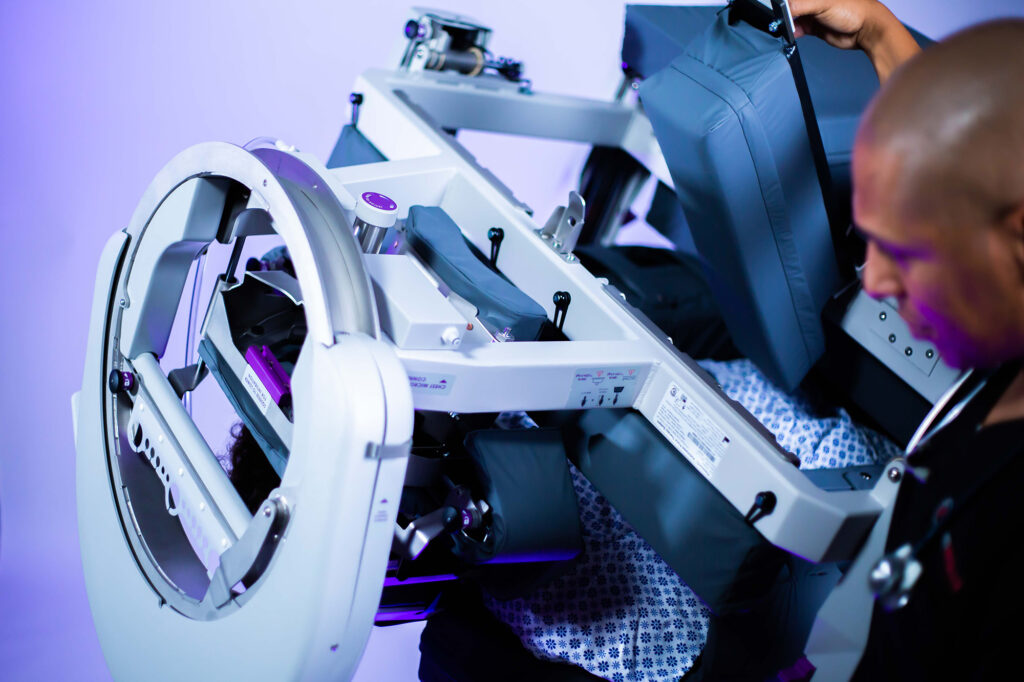
Pronova-O2™ – Prone with the touch of a button
Methods of Prone Positioning: A Review
A recent article published in Human Factors Journal reviewed methods for prone positioning such as manual prone positioning, mechanical lift-assisted prone positioning, and automated prone positioning since COVID-19 increased the implementation of this procedure. This article described several different considerations for each method of prone positioning in areas such as patient safety and staff safety.
Some of the patient safety issues discussed include considerations with skincare, invasive lines, and assessments. The article concluded that manual prone positioning, which is by far the most common way used to prone patients, increases the risk for tube dislodgement or line removal due to the inability to control the turning maneuver.
The article went on to discuss two issues with staff safety and prone positioning – exposure and musculoskeletal injury. When discussing staff exposure, the article stated “minimizing the number of healthcare workers needed to prone the patient is beneficial not just for workflow and staffing, but also to limit the number of staff exposed to COVID-19.” When discussing musculoskeletal injury associated with manual prone positioning, the article mentions a recent analysis of healthcare workers performing a simple turning task. It found that a patient weighing 82 kg (about 180 lb) often exceeds the recommended staffing to reduce the risk for injury. In general, the types of lifting required for manual prone positioning have a high risk for musculoskeletal injuries to healthcare workers.
The article concluded that using an overhead lift or automated prone positioning device is the most desirable way to prone patients. This article also highlighted some barriers to the use of a previously produced automated prone positioning device and discussed concerns such as availability and weight limit.
The Pronova-O2™ Automated Prone Therapy System is now available for purchase or rental, is competitively priced, and has an increased weight capacity of 400 pounds, overcoming the obstacles to using automated prone positioning devices mentioned in this article.
INQUIRE NOW to request a demo for your facility! For additional information on automated prone positioning, please visit turnmedical.com or call 1-855-275-8876.
–
Refer to Pronova-O2 Instructions for Use for full prescribing information including risks






